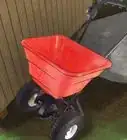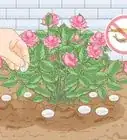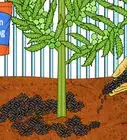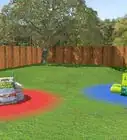X
wikiHow is a “wiki,” similar to Wikipedia, which means that many of our articles are co-written by multiple authors. To create this article, 17 people, some anonymous, worked to edit and improve it over time.
This article has been viewed 179,158 times.
Learn more...
If you're a home gardener wanting to increase your garden's yield, organic materials may not always be practical, so knowing how to use commercial (also known as synthetic or chemical) fertilizer correctly and with care may be your best option. Here is some help on how to use these powerful chemicals wisely.
Steps
-
1Understand what chemical fertilizers are made of. When buying a granular fertilizer, the bag should list the contents, including the percentage of three basic chemicals that are fundamental for plant growth. These three chemicals are represented by the label NPK on most fertilizer bags, and are, as follows:[1]
- Nitrogen. This is essential for leaf growth, and is used in higher proportion where a large plant and lots of foliage are desirable. Certain plants extract nitrogen from the atmosphere. One example is the leguminous plants, which include peas and beans. They have nodules on their roots that actually absorb nitrogen directly from the environment, and require little additional chemical nitrogen in their fertilizer. Corn, grains, and other crops that have narrow leaves, on the other hand, often require more nitrogen to thrive. It is represented by the N in the standard fertilizer label.
- Phosphate. This is another chemical that plants require for good health. It is a product of phosphate mines or industrial waste, and plants use the chemical phosphorus in cellular processes. Phosphate is more common in soils containing a lot of clay, and is quickly leached from sandy loams or basic sandy soils. It is represented by the P in the standard fertilizer label.
- Potash. This is the third chemical in the fertilizer description. It is also used by the plant at a cellular level, and is necessary for good bloom production and healthy fruiting of the plant. It is represented by the K in the standard fertilizer label.
-
2Research the nutrient requirements for the crop you are growing. Lawns and landscaping may benefit from a fertilizer blend with a larger proportion of nitrogen and moderate amounts of potash and phosphate, whereas garden plants are likely to benefit more from a specialized blend using less of one element, and more of another. If you are unsure of the exact needs of your plants, ask at your local garden supplier, or contact a government official specializing in agriculture, like the USDA or the County Extension Service in your area.Advertisement
-
3Have your soil tested to understand what compounds are needed the most for your growing conditions and crops. Garden supply centers, farm suppliers, and county agriculture agents often can have soil samples taken and analyzed free of charge or at low cost. This type of analysis can be made for specific crops and used for calculating exact requirements for optimum fertilization. Failure to use an analysis means you will likely use too much or too little fertilizer.[2]
-
4Calculate how much fertilizer you need. Application rates can be determined by measuring the area you plan to farm, then multiply the pounds per unit of area (X thousands of square foot, or acres) of the chemicals your soil analysis recommends, but if you choose to forgo this method, you can apply your fertilizer using your best judgment.[3]
-
5Purchase the product you determine you need for your crop and soil condition. Fertilizer is sold in different sized bags, with larger bags usually costing less per pound (kilo), so you may find you will need to choose one that offers the best compromise for your purposes. A balanced fertilizer like 8-8-8 (10-10-10, or 13-13-13) may be the best choice for your garden. Also look at these other factors:[4]
- Secondary nutrients are needed in lower proportions than the basic three chemicals noted above, and help maintain the soil quality and contribute to healthy plants. The secondary nutrients include these:
- Calcium
- Sulfur
- Magnesium.
- Micro-nutrients. These are also essential for good plant health, and may or may not be included in your fertilizer choice. Look for the following, in particular:
- Iron, in soluble form, helps with blooms, and to keep foliage green
- Copper, in soluble form, also helps keep foliage green, and will improve resistance to some diseases
- Zinc
- Manganese.
- Decide if you want to combine other products with your fertilizer before purchasing. Special formulations of fertilizers that include herbicides and insecticides are available, and can be used to save application labor and time. Using these, however, limits you to areas where the chemical additives will not have an adverse effect. This includes fertilizers that contain pesticides that will contaminate plants, and herbicides that will damage the plants you are intending to grow. In general, using insecticides and herbicides on specific problems allows you to decrease the amount you need, and target problems with more effective results.
- Secondary nutrients are needed in lower proportions than the basic three chemicals noted above, and help maintain the soil quality and contribute to healthy plants. The secondary nutrients include these:
-
6Apply the fertilizer. There are a number of different methods for applying fertilizer, including direct application by hand, broadcast application, dilution application and using mechanical equipment to side dress the fertilizer to the growing bed. Which method used depends on the amount of fertilizer to be applied, the size of area it is to be applied on, and the size of the plants you are fertilizing.[5]
- Pre-plant application on a small area can be done by scattering fertilizer over the entire area and the tilling it into the soil. Apply at a rate of one or two pounds for each 100 square feet (9.29 square meters) maximum to avoid over-fertilizing the area.
- Broadcast pre-plant application is suitable for larger areas, and a typical rate of application would be 200-400 lbs/acre (pounds per acre), using a calibratable fertilizer spread either pushed by hand, or pulled by a lawn tractor or farm tractor. After application, till the soil to incorporate the fertilizer and decrease the chance of run-off if rain occurs.
- To avoid poisoning the plants, especially tender young ones, dilute the fertilizer into a bucket or watering can filled with water. Use that solution to water your plants. This method also helps the plant absorb it easier. After watering the plant with fertilizer, water it another time, this time with regular water. This second watering is done to remove fertilizers that may have dropped on leaves and stems. Unwanted fertilizers on leaves might cause damage and corrosion.
- Direct application to individual plants or plants in rows can be done by pouring the fertilizer into a clean, dry bucket, then walking down the row dropping the fertilizer next to plants. Avoid dropping the fertilizer directly on plants, as the chemicals can burn them. Use a small amount, around one tablespoon each for small plants.
- Direct application to row crops can be done with a cultivator equipped with a side-dressing apparatus. This apparatus consists of a hopper with a wheel to drive a dispensing mechanism and chutes to direct the fertilizer to the row.
-
7Cultivate or till the fertilizer into the soil around the plants to make it available to the plant's roots, to accelerate absorption, and to prevent run-off in case of rain. This can be done using a cultivator or tiller, or by simply using a hoe to stir the fertilizer into the soil.
-
8Watch for signs of over- or under-fertilization while your plants are growing. Overproduction of foliage without fruit production is one sign of over-fertilization, and weak, undersized plants usually indicates under-fertilization. Other factors, including disease, lack of water or sunlight, and insect damage may be mistaken for under-fertilization, so close observation and familiarity with the plants you are growing is essential for success.
- Repeat the application of fertilizer as needed to maintain good plant growth/ crop production. Using smaller amounts of fertilizer at frequent intervals may be more beneficial than applying single applications at a high rate, as some of the fertilizer can be lost by leaching or in run-off if heavy rains occur after it is applied.
-
9Clean up your application equipment as soon as you are finished using it. Chemicals in fertilizers are corrosive, and metal parts can be damaged if leftover material is not removed thoroughly.
- Store your fertilizer spreaders or other tools in a dry place when not in use, and make sure they are well lubricated and maintained.
-
10Store unused fertilizer in its original package, if possible, in a dry, safe place. Opened bags should be taped or tied shut to prevent moisture from causing the fertilizer to clump, dissolve, or harden into a solid mass.
Advertisement
Community Q&A
-
QuestionDo I apply the fertilizer first, or the water first?
 Community AnswerFertilize first, then water if needed. Many fertilizers do not have to be watered in.
Community AnswerFertilize first, then water if needed. Many fertilizers do not have to be watered in. -
QuestionShould I fertilize the soil prior to sowing my mustard seeds?
 Community AnswerI would, yes.
Community AnswerI would, yes. -
QuestionIs there chlorine in field fertilizer?
 Community AnswerYes.
Community AnswerYes.
Advertisement
Warnings
- Avoid breathing fertilizer dust when applying, and wash skin and clothing when you are finished.⧼thumbs_response⧽
- Nitrogen fertilizers like ammonium nitrate are dangerous materials, and can even be explosive under certain conditions.⧼thumbs_response⧽
Advertisement
Things You'll Need
- Proper fertilizer for your needs
- Equipment to apply the fertilizer
- Equipment for cultivation after application
References
- ↑ https://www.sunset.com/garden/garden-basics/crash-course-fertilizers
- ↑ https://agrilifeextension.tamu.edu/library/gardening/fertilizing/
- ↑ https://agrilifeextension.tamu.edu/library/gardening/fertilizing/
- ↑ https://www.finegardening.com/article/fertilizing-basics
- ↑ https://agrilifeextension.tamu.edu/library/gardening/fertilizing/
About This Article
Advertisement
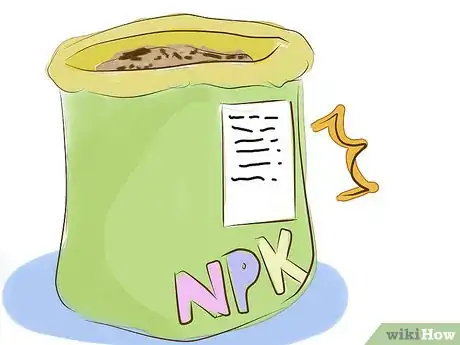
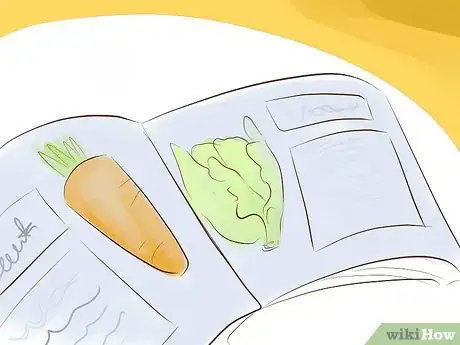
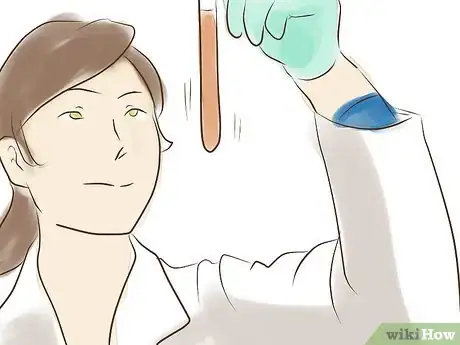
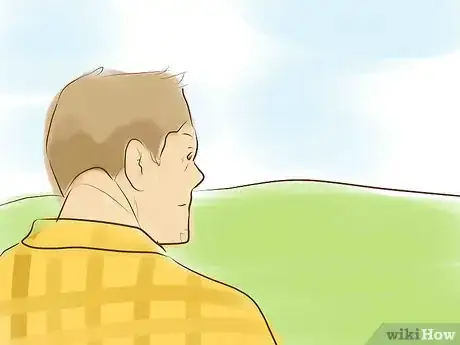
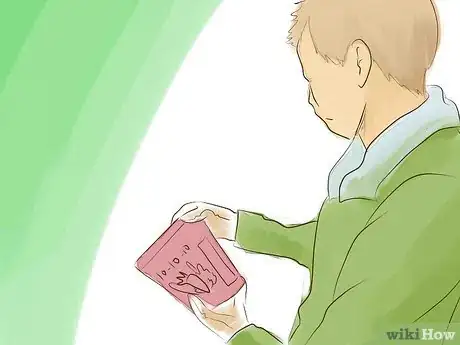
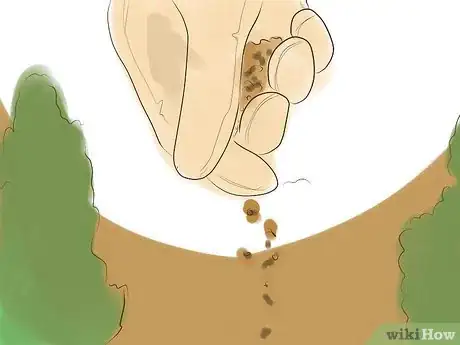
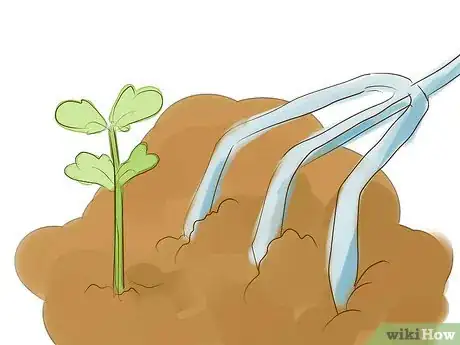


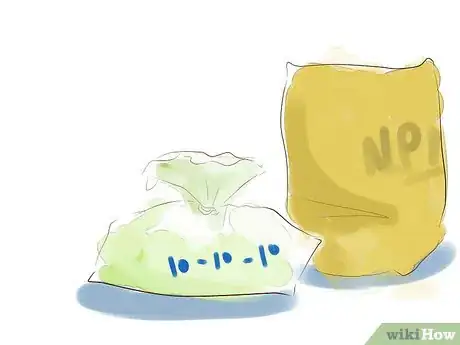
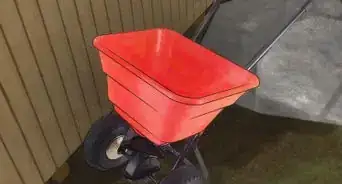
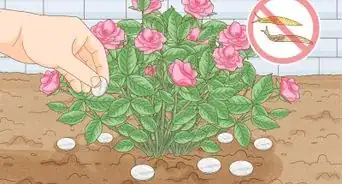
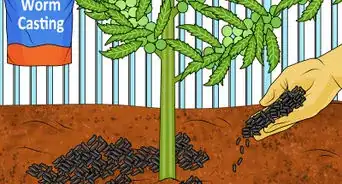
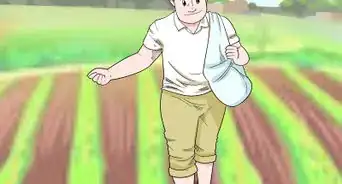
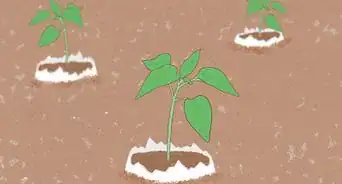
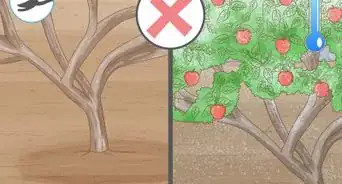
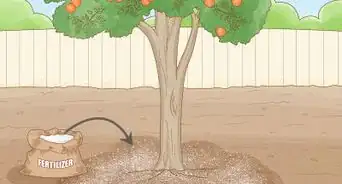
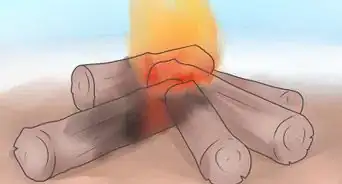
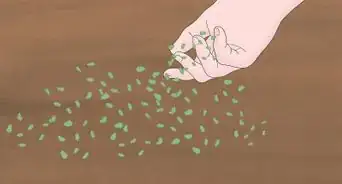
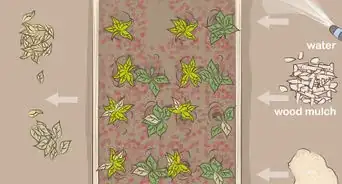
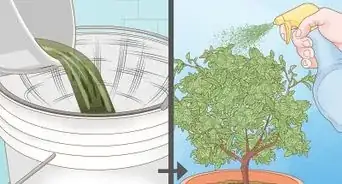
-Step-10-Version-3.webp)






